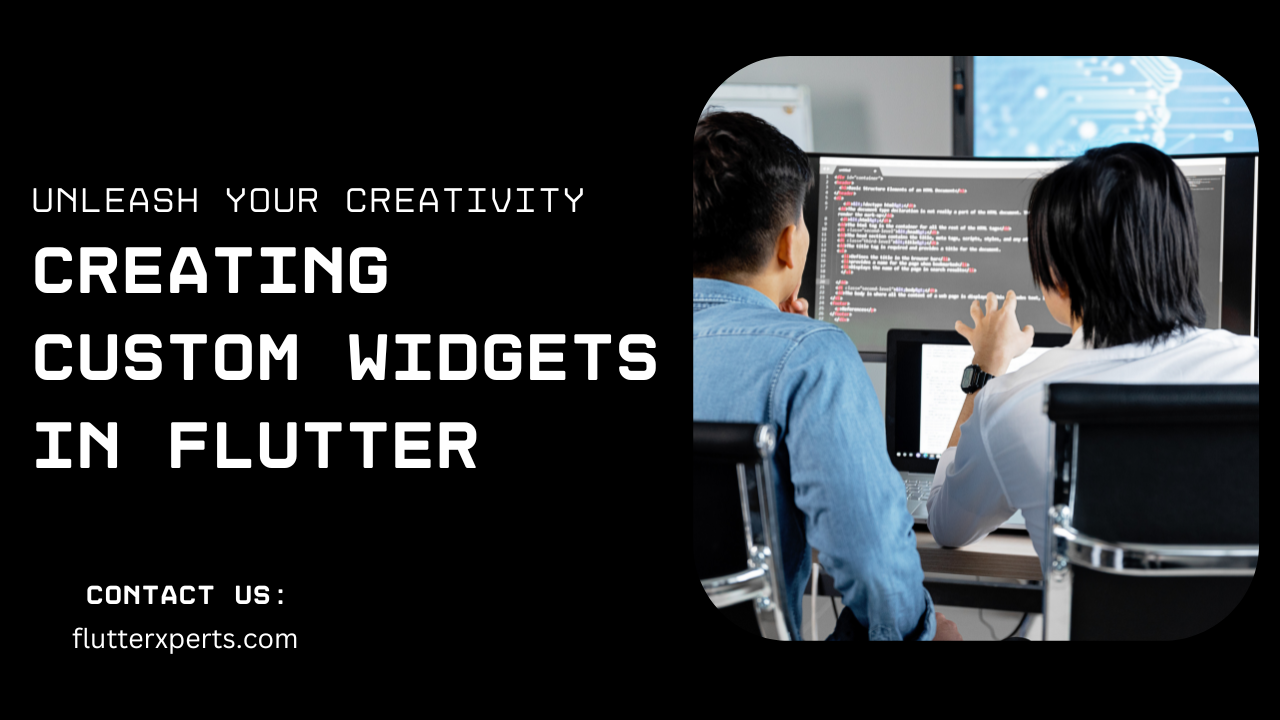Step-by-Step Tutorial: Creating Custom Widgets in Flutter
Introduction
In Flutter, widgets are the building blocks of user interfaces. They are responsible for defining the visual elements and layout of your app. While Flutter provides a wide range of built-in widgets, there may be cases where you need to create your own custom widgets to meet specific requirements.
In this tutorial, we will explore the process of creating custom widgets in Flutter. We will cover the benefits of using custom widgets, understand the anatomy of a widget, and learn how to create both stateless and stateful custom widgets. Additionally, we will discuss reusing and sharing custom widgets and conclude with some best practices for custom widget development.
Understanding Flutter Widgets
Before we dive into creating custom widgets, let’s briefly understand what widgets are in Flutter. Widgets are UI elements that represent a part of the user interface. They can range from simple elements like buttons and text fields to complex elements like lists and grids.
In Flutter, widgets are divided into two main types: stateless and stateful. Stateless widgets are immutable and do not store any mutable state. They are purely based on their input parameters and provide a static user interface. On the other hand, stateful widgets can change their internal state during the lifetime of the widget. They can respond to user interactions or data changes and update their UI accordingly.
Benefits of Custom Widgets
Using custom widgets in your Flutter app offers several benefits. Let’s explore some of them:
- Code Reusability: Custom widgets allow you to encapsulate complex UI components and logic into reusable modules. This promotes code reusability and helps in maintaining a clean and modular codebase.
- UI Consistency: By creating custom widgets, you can ensure a consistent look and behavior across your app. You can define a set of design patterns and apply them consistently throughout your UI.
- Abstraction and Encapsulation: Custom widgets enable you to abstract away implementation details and expose a simple interface for interacting with the widget. This improves the overall code organization and makes it easier to reason about your app’s UI.
- Customization: With custom widgets, you have complete control over the visual appearance and behavior of your UI components. You can tailor them to fit your specific design requirements and create a unique user experience.
Anatomy of a Custom Widget
To create custom widgets in Flutter, it is important to understand their anatomy. A widget in Flutter is essentially a Dart class that extends either the StatelessWidget or StatefulWidget class.
A stateless widget class typically consists of a single build method that returns a widget tree based on the given input parameters. It does not maintain any mutable state. On the other hand, a stateful widget class includes a createState method that creates a corresponding state object. The state object manages the mutable state for the widget and is responsible for building the widget tree.
When creating custom widgets, it’s important to follow the widget lifecycle and ensure proper separation of concerns. Now, let’s dive into creating custom stateless and stateful widgets in Flutter.
Creating a Custom Stateless Widget
Creating a custom stateless widget in Flutter is a straightforward process. Let’s go through the step-by-step process:
- Define a new Dart class that extends the
StatelessWidgetclass. - Implement the required
buildmethod within the class. This method returns the widget tree that defines the UI of your custom widget. - Specify the desired properties of your widget by adding constructor parameters to the class. These parameters will be used to configure the widget during its creation.
- Inside the build method, use the provided properties to customize the appearance and behavior of your widget. You can utilize built-in Flutter widgets or create nested custom widgets as needed.
Here’s a code example of a custom stateless widget that displays a simple text message:
class CustomWidget extends StatelessWidget {
final String message;
CustomWidget({required this.message});
@override
Widget build(BuildContext context) {
return Text(message);
}
}
In the above example, the CustomWidget class extends the StatelessWidget class and includes a message property. The build method returns a Text widget that displays the provided message.
Creating a Custom Stateful Widget
When you need to manage mutable state within your custom widget, you can create a custom stateful widget in Flutter. Here’s a step-by-step guide:
- Define a new Dart class that extends the
StatefulWidgetclass. - Implement the required
createStatemethod within the class. This method returns a new instance of the corresponding state class. - Create a separate state class that extends the
Stateclass and is associated with your custom widget class. - Implement the necessary methods within the state class, such as
build, to define the UI and handle state changes. - Inside the build method, use the state properties and widget configuration to build the widget tree. You can update the state using the
setStatemethod when required.
Let’s look at an example of a custom stateful widget that manages a counter value:
class CustomStatefulWidget extends StatefulWidget {
@override
_CustomStatefulWidgetState createState() => _CustomStatefulWidgetState();
}
class _CustomStatefulWidgetState extends State<CustomStatefulWidget> {
int counter = 0;
void incrementCounter() {
setState(() {
counter++;
});
}
@override
Widget build(BuildContext context) {
return Column(
children: [
Text('Counter: $counter'),
ElevatedButton(
onPressed: incrementCounter,
child: Text('Increment'),
),
],
);
}
}
In the above example, the CustomStatefulWidget class extends the StatefulWidget class, and the associated _CustomStatefulWidgetState class extends the State class. The state class includes a counter property, an incrementCounter method, and the build method that returns a widget tree with a counter value and an increment button.
Reusing and Sharing Custom Widgets
One of the main advantages of custom widgets is their reusability. Once you create a custom widget, you can reuse it across different screens or even in multiple projects.
To reuse a custom widget, you can follow these steps:
- Create a separate file for your custom widget class or a collection of related widgets.
- Import the file containing your custom widget class into the files where you want to use it.
- Instantiate and use the custom widget just like any other built-in Flutter widget.
By organizing your custom widgets into separate files and leveraging import statements, you can easily share and reuse them throughout your Flutter project.
Best Practices for Custom Widget Development
When creating custom widgets in Flutter, it’s important to follow some best practices to ensure maintainable and efficient code:
- Modularity: Break down complex UI components into smaller, reusable widgets. This promotes code reusability and improves the overall structure of your app.
- Composition: Combine multiple widgets to build more complex UI components. Leverage the power of Flutter’s widget composition to create reusable and flexible UI elements.
- Separation of Concerns: Keep the logic and presentation separate. Define separate classes for managing state and UI rendering to improve code organization and readability.
- Testing: Write unit tests for your custom widgets to ensure their functionality and behaviorare working as expected. Use tools like Flutter’s built-in testing framework to automate the testing process.
- Documentation: Document your custom widgets with clear explanations, usage examples, and any necessary configuration options. This helps other developers understand how to use and customize your widgets effectively.
- Performance Optimization: Optimize your custom widgets for performance by minimizing unnecessary rebuilds and leveraging Flutter’s widget lifecycle methods. Use techniques like
constconstructors,constwidgets, andshouldRebuildmethods to optimize widget rendering. - Versioning: If you plan to share your custom widgets as a package or library, follow semantic versioning principles. Increment the version number when introducing breaking changes and maintain backward compatibility whenever possible.
By adhering to these best practices, you can ensure the development of high-quality and reusable custom widgets in your Flutter projects.
Conclusion
Custom widgets are a powerful tool in Flutter app development. They offer code reusability, UI consistency, customization options, and abstraction. In this tutorial, we explored the process of creating custom widgets step by step. We discussed both stateless and stateful widgets, the anatomy of a widget, and the benefits of using custom widgets.
Remember to follow best practices for custom widget development, such as modularity, separation of concerns, and performance optimization. By incorporating these practices into your workflow, you can create maintainable and efficient custom widgets that enhance the user experience of your Flutter apps.
FAQs
Q: Can I use custom widgets in existing Flutter projects?
Yes, you can integrate custom widgets into your existing Flutter projects. Simply import the file containing your custom widget class and instantiate and use it as needed.
Q: Are there any performance considerations when using custom widgets?
Custom widgets should be optimized for performance to ensure smooth app performance. Minimize unnecessary widget rebuilds, leverage Flutter’s lifecycle methods, and follow performance optimization techniques like using const constructors and widgets.
Q: Can I share my custom widgets with other developers?
Absolutely! You can share your custom widgets with other developers by packaging them as a library or sharing the code repository. Properly document your widgets to facilitate their usage by others.
Q: Are there any UI design guidelines for creating custom widgets?
While there are no strict guidelines, it’s recommended to follow Flutter’s design principles and ensure consistency across your app’s UI. Keep the user experience in mind when customizing your widgets and consider usability and accessibility.


